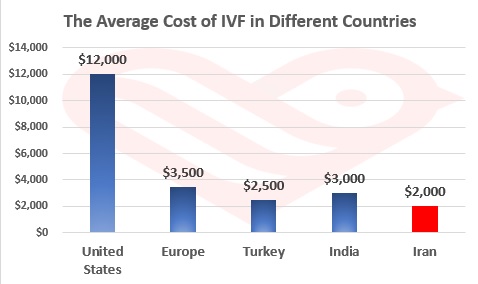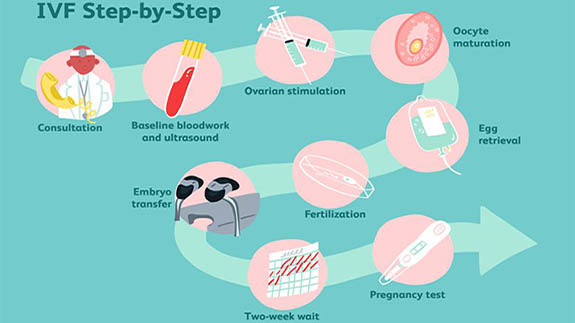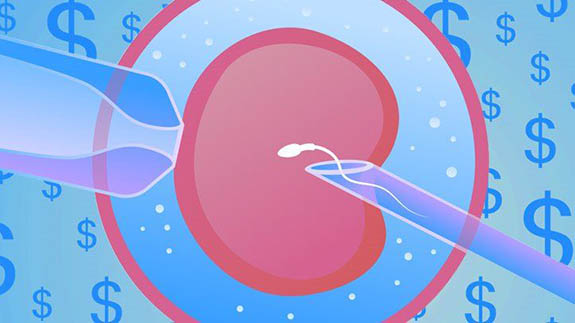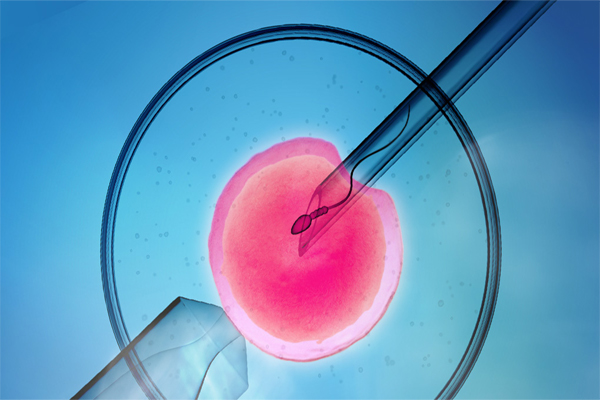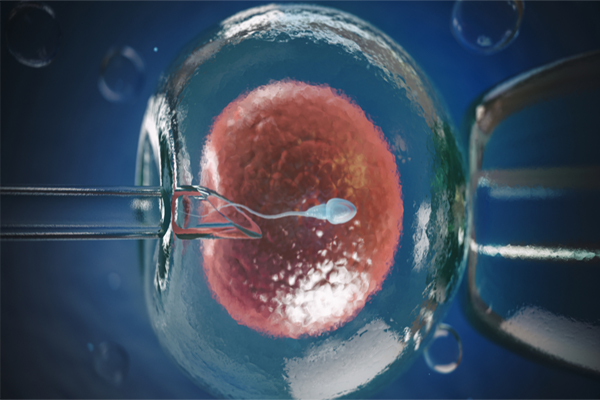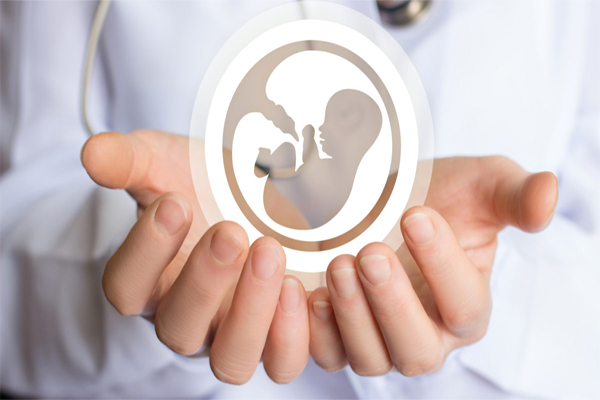IVF is used to treat infertility problems and prevent genetic disorders in the fetus. Prior to IVF infertility treatment, the couple may use less invasive methods such as medication for fertility. IVF is used as a primary treatment for people over 40 years of age. To perform this procedure, the patient must be in good physical health.
Keep reading on Moj Aramesh Amitis Health Tourism Company to learn more about treating infertility via IVF method.
IVF or in vitro fertilization is the most effective technology for the treatment of infertility. This method is done in two ways. One uses the patient’s own egg and sperm and the other uses a donated egg or sperm to treat infertility. IVF includes a variety of treatments for infertility and ovarian and sperm-related disorders.
How you prepare for IVF?
Before infertility treatment by IVF, you must collect the required medical records, perform the necessary tests and perform the necessary examinations by a gynecologist. The instructions recommended by your doctor should be well followed to get the best out of IVF infertility treatment. Before infertility treatment by IVF, you should take medications that have a direct impact on the eggs, causing the ovaries to produce multiple developed eggs. This process is called ovulation induction. After the eggs are released, you will undergo repeated tests and ultrasounds to check the status of the hormones and the amount of eggs released. After this step you will enter the embryo transfer process.
Embryo Transfer
Embryo transfer is usually performed 2 to 5 days after egg retrieval. Although the procedure is painless, you will receive a mild sedative during the procedure. But the mother may experience a little abdomen cramping. First, the doctor inserts a long, flexible tube into the mother’s cervix. Then a syringe containing several embryos suspended in the fluid is attached to the end of the tube and injected into the uterus using a syringe of embryos.
After IVF Procedure
After the embryo transfer process, you can resume your normal activities cautiously. Avoid strenuous activities as the ovaries are sensitive after the procedure. If you feel pain after embryo transfer, visit your doctor to monitor for early detection or prevention of possible complications of embryo transmission, including infection, ovarian torsion and ovarian hyperstimulation syndrome. Twelve days after egg retrieval and embryo transfer, you should take a blood test to make sure you are pregnant. If the test results are positive and you are pregnant, you will be referred to an obstetrician to start prenatal care. However, if you do not become pregnant, you should stop taking progesterone and then get your period within a week. If you do not get period or have unusual bleeding, consult your doctor. In this case, your doctor may use other methods to help your fertility.
The Cost of IVF Procedure in Iran
In general, the cost of IVF services in Iran is much lower than in other countries. In addition to the low cost of treatment, the cost of staying in Iran for IVF services will be significantly lower, starting at $2,500. Therefore, most foreign applicants choose Iran to perform IVF. Iran also has the best gynecologists and IVF treatment centers. Therefore, people who apply for IVF and other infertility treatments can receive the best services at the lowest cost.
It must be mentioned that in the case where we mentioned the cost of freezing the fetus, we do not mean the cost of freezing the fetus for the first time, but the cost of extending the fetal maintenance that local and international patients have to pay annually. In general, the cost of freezing a fetus is calculated for 6 months and one year, which is $ 100 per year for international patients.
IVF Procedure in Iran
The process of IVF in Iran is such that the patient will first be visited by a gynecologist to check the general condition of the ovaries and prescribe a series of tests and ultrasounds for the patient. Based on this, the specialist doctor will determine if the patient is a good candidate for IVF. The patient’s spouse should also be examined by an urologist. If the couple is ready for IVF infertility treatment, the patient starts treatment on the second or third day of menstruation. Starting of treatment is with ovulation-stimulating drugs, which can be taken orally or by injection, depending on the patient’s current condition and ovarian reserve. During this period of 10 to 12 days, the patient must undergo 3 to 4 ultrasounds to check the effect of the drugs on her ovulation. This process continues until the condition of the eggs reaches an acceptable level. After these procedures, it is time for the puncture or ovulation stage. On the day of the puncture, a sperm sample is taken from the patient’s spouse, and an egg sample is taken from the patient under a brief anesthesia, and IVF fertilization is formed through male sperm and female eggs. You then have to wait 3 to 5 days for the embryos created in the laboratory, called blastocysts, to grow properly. On the third day, the fetus usually reaches an acceptable stage and is ready to be transferred to the mother’s uterus. The embryo transfer process is based on the number of embryos required and the quality of the embryos created, and the highest quality embryos are transferred to the mother’s uterus and the rest of the embryos will be stored in the laboratory freezer.
Admission of International Applicants in Iran
In the following, we will discuss the admission of international patients in Iran for IVF infertility treatment. This method is performed in two ways:
- Remote Admission
Prior to the patient’s arrival in Iran, admission is made and the couple’s history and medical records are received. Based on these documents, the length of treatment, cost and type of treatment are diagnosed by a gynecologist and urologist. The required medical records must be new and not more than 6 months old. Patient’s medical documents must be completed before arrival and treatment. As patient’s statements are not enough for diagnosing and choosing a treatment method. Many patients also want to perform all the necessary tests in Iran. Because the cost of these tests in Iran is lower than in other countries and some countries are not advanced. People who wish to undergo tests on IVF infertility treatment in Iran should undergo a month-long process.
Because treatment begins on the second and third day of menstruation and sampling requires a period of the menstrual cycle. To start treatment, the patient must be in Iran a few days before the onset of menstruation, to take the necessary tests at the appropriate time and take the necessary medications with the onset of menstruation. This process takes about 3 to 4 weeks and after that the patient can return home afterwards. In some cases, the patient needs to be in Iran for the rest of the treatment. For example, if the patient is not prepared on the day of ovulation (the thickness of the uterine endometrium is not suitable), the embryo transfer operation will not be performed. Because it will fail. In such cases, the patient should return home and return for further cycles for further treatment. After the patient has had one or two menstrual cycles, she can start taking the medication as further treatment. Then, the patient should return to Iran 15 to 20 days after taking the drug and give an ultrasound again on the second or third day of menstruation and start taking other medications until the day of embryo transfer.
- Admission of the patient in person and from the place of origin
Patient admission in Iran is performed in person from 8 am in the center. Patients who visit for the first time must bring full documents (identity card, passport, contract, required medical records, and pay $500 in advance). The patient’s spouse must also be eligible for sperm sampling. That is, sperm discharge should not be less than 3 days or more than 5 days. The length of treatment of patients can not be determined at the first visit. This depends on the medical conditions, the required documents and the treatment process. The more medical records are completed, the shorter the treatment process and the more evidence defects, the longer the treatment process will take.
Different Methods of IVF in Iran
Different methods of IVF infertility treatment are fully described in this article from Moj Aramesh Amitis Health Tourism Company.
When embryo transfer is not successful, frozen embryos are used in the laboratory for further patient referrals, which is called microinjection or transfer of frozen embryos. Microinjection (ICSI) is one of the most advanced methods of infertility treatment by IVF. This method is often used in infertility center and all patients are requested treatment with this method. Microinjection is performed for men and women with suitable and high quality sperm and eggs for fertilization. The procedure costs $2,500, including initial tests, a male sperm examination, an ultrasound for the woman, an ovulation and a one-time embryo transfer to the uterus.
Varicocele is a men’s testicular varicose vein that prevents fertility. Men who are diagnosed with the disease by a urologist undergo this operation, which has a recovery period of 3 to 6 months. After the recovery period, sperm are sampled to make sure the new sperm sample is of good quality. If the sperm is of good quality, it is ready for IVF.
Depending on the gynecologist’s diagnosis, ovarian PRP is used to treat infertility. This method helps to improve the condition of the ovarian endometrium so that we can have a successful embryo transfer. This method is very effective in the majority of women with low ovarian reserve, women with multiple miscarriages, women with polycystic ovary syndrome (ovarian laziness). PRP is also very effective in cases where infertility is due to hormonal problems or even in women with premature menopause or women in the premenopausal stage. This method is not mandatory; But for people who want their uterus ready for pregnancy, ovarian PRP is performed.
Hysteroscopy is a procedure for scratching the ovarian endometrium and is performed to prepare the uterus for embryo transfer. Some uterine problems such as endometrial polyps, submucosal fibroids, uterine septum and intrauterine adhesion interfere with fetal implantation. Sometimes hysteroscopy is suggested before starting infertility treatment to check the uterus for the ability to accept the fetus. Hysteroscopy is the standard method for examining uterine problems directly. Eliminating and improving these disorders increases the chances of getting pregnant.
This procedure is performed for men with azoospermia (zero-sperm without sperm). In this method, sperm samples are taken from the patient’s testicle to make sure the patient has sperm. If the patient has sperm, freeze the sperm sample to transfer the fetus. However, if the patient is without sperm, he will be candidates for receiving donated sperm . If the sperm sample removed from the testis is not of good quality, it should be sampled again from testicular tissue on the day of the pancake when the patient visits again.
IVF Alternative Methods
There are several methods that can be used instead of IVF to treat infertility, each of which will be described below.
Surrogacy is the process by which a person agrees to raise the fetus of a person with infertility in her womb. If a person who is chosen as a surrogate mother receives a fee for pregnancy and childbirth, this is called a commercial surrogacy.
The cost of this method includes several factors:
- The cost of examinations and necessary tests for parents
- The cost of examinations and tests related to the surrogate mother
3.. The cost of counseling to receive surrogacy in the donation unit and the contract between the patient and the surrogate mother (the contract amount is set only between the intended parents and the surrogate and the donation unit does not accept any responsibility in this regard). The cost of surrogacy in Iran and by Moj Aramesh Amitis Health Tourism Company in the form of three packages of bronze, silver and gold is about $ 8000 to $9100 and it takes at least 2-3 months to complete the embryo transfer process. This fee includes general tests, hormonal tests, ultrasounds, doctor’s appointments and medications. It should be noted that the surrogate must be a foreign national, in addition to having good age and general health.
- Intrauterine IUI sperm implication
The process by which male sperm are inserted directly into a woman’s uterus is called IUI, or artificial insemination. This process reduces the time and distance that sperm travels to fertilize and makes fertilization easier.
- Request a Colour Doppler Sonography
Colour doppler sonographies are not performed on surrogates unless the gynecologist has determined that the fallopian tubes in the uterus are inflamed or infected. Many patients come from other centers to undergo colour doppler sonography . Because the quality and accuracy of our center’s work is very high and a large number of colour doppler sonographies are taken daily in the center (about 30 to 40 color photos).
- IVF for Patients with Cardiovascular Diseases
If a person who wants to have IVF has a specific condition such as cardiovascular disease, they must carry a high-dose hormone intake certificate and the ability to perform IVF. However, if the patient does not have the relevant certificate, they will be referred by the gymatologist to the relevant specialist to receive the certificate. If you are subject to other tests to control the disease, you must also pay separate fees.
Concluding Remarks
In vitro fertilization or IVF is a set of different methods used to treat infertility in both men and women. During in vitro fertilization, genetic problems that are dangerous to the fetus are identified and eliminated through surrogacy. During IVF infertility treatment, mature eggs are removed from the ovary, fertilized with male sperm in a laboratory, and transferred to the patient’s uterus. This cycle will take about 3 weeks. But sometimes different methods may be used during this process; In such cases, the treatment process becomes a little longer.
For infertility treatment by IVF method in Iran, you can communicate with skilled experts of Moj Aramesh Amitis health Tourism Company and benefit from free consultation services.You can also use the facilities of Moj ramesh Amitis Health Tourism Company to perform the entire IVF infertility treatment process in Iran with the best price and the highest quality under the supervision of the best specialists.
